The Southern Cassowary (casuarius casuarius) is one of nature’s most bizarre and formidable birds. Known as a “living dinosaur”, this flightless bird is found in the tropical forests of New Guinea, nearby islands, and northern Australia The striking appearance, powerful build and important ecological role the Southern Cassowary plays is a testament to such a remarkable species which we ought to pay close attention to in order for it to be protected.
Looking back in time — all the way to the extinct relatives of humans — we can see just how long cassowaries and their ancestors have been around.
Cassowaries are part of the Casuariidae family which is under the order, Struthioniformes. This order belongs to a group of large, long-legged birds that cannot fly (flightless), such as emus, ostriches and kiwis. Those birds have all evolved from a common ancestor, an early bird that existed some 60 million years ago in the time of the dinosaurs! Other prehistoric attributes of the cassowary, it’s casque — a helmet-like formation on top of its head — also make this bird known as a living dinosaur.
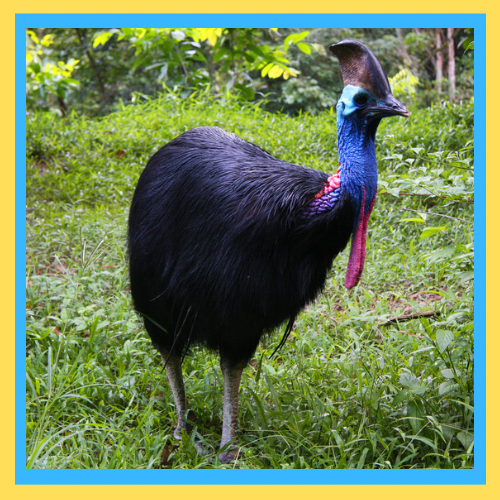
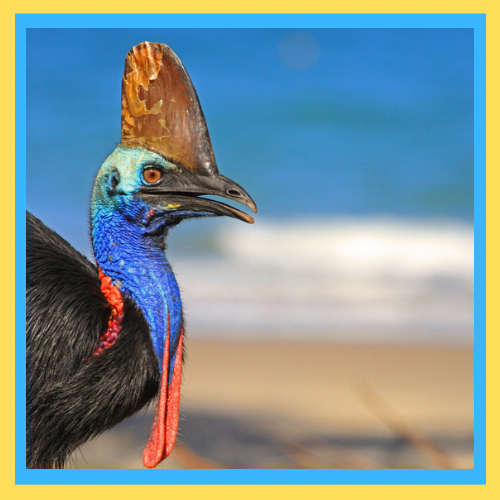
Nature’s Wonder
The Southern Cassowary is an impressive sight, coming in at 6.6 foot tall and weighing anywhere from 110 to (a surprisingly heavy) 160 pounds! But its most well known feature is the casque, which increases in size throughout its lifetime and has been hypothesized to serve multiple functions such as protecting their head while they move through the forest, sexual selection, voice resonator, or even heat dissipation.
Body consists of long coarse black feathers giving that a thick covering The male is dramatic with its blue and purple neck with flashes of red wattles. The cassowary’s powerful legs terminate in three-toed feet with sharp claws on each toe. The inner toe, which is armed with a dagger-like claw that’s up to 5 inches long, is used during fights and can cause serious injury if the cassowary becomes seriously threatened.
Ecological Role: Rainforest Gardener
Cassowaries are frugivorous contributing primarily to the breakdown of a broad spectrum of fruit types They also eat fungi, insects, and small vertebrates. The bird acts as an important agent of seed dispersal by eating the whole fruit and excreting the seeds a great distance away from the parent tree. It helps to promote forest regeneration and greater biodiversity, which is why the cassowary has been called “the gardener of the rainforest.”
Behavior : Solitary, secretive
Southern Cassowaries are mostly solitary animals except during the breeding season. Normally, cassowaries hide behind the thick undergrowth in the rainforest. Even so, cassowaries can be noisy, including with deep booming calls that they use to communicate across the forest — despite how rarely a person might spot them. Those calls are very important in terms of territories and attracting females.
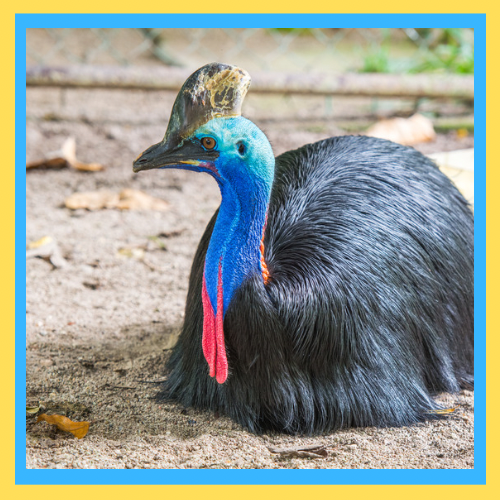
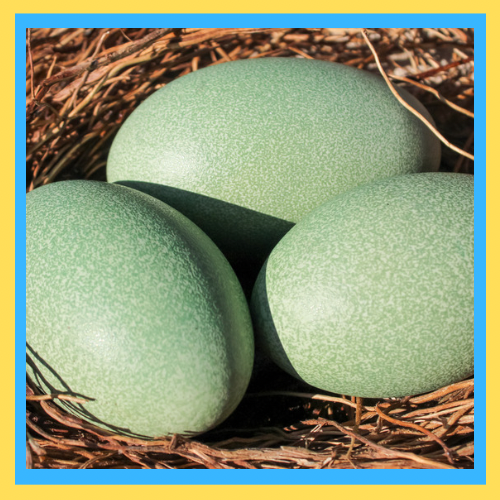
Breeding and Parenting: Special Among Birds
The Southern Cassowaries breeding season typically runs from June through to October. Females during this time exhibit a polyandrous relationship with multiple males on a site, as the males are also becoming more territorial. The female lays a clutch of 3-5 large, green eggs in a nest constructed from leaves and other forest floor litter.
In a most unusual role-reversal in bird parenting, male cassowaries incubate the eggs as well as raise the chicks. The male incubates the eggs for around 50 days and then looks after the chicks for up to nine months, leading them through the forest and showing them how to locate food.
IUCN Conservation Status
The Southern Cassowary is listed as ‘Vulnerable’ on the IUCN Red List due mainly to habitat loss. In recent years significant habitat fragmentation has occurred due to deforestation for agriculture and urban development, as well as large scale infrastructure projects. Cassowary populations are also threatened by vehicle strikes, attacks from dogs and diseases.
There are currently conservation measures in action to save the Southern Cassowary and its home. Those need to include the establishment of protected areas, addressing habitat restoration, and diffusion of effort across measures that address human-wildlife conflicts. Community education programs are also critical in helping to raise awareness of the significance of cassowaries and why it’s important to save their rainforest home.
Fascination and Fear: The Cassowary in our culture
Cultural history The Southern Cassowary’s place in the cultural history of its range is unique. Given the place of cassowaries in myths, stories and for instance on the totems of some Aboriginal Australian people, one might assume that they represent a dangerous creature as much today as ever. The perception is not entirely misguided — cassowaries are known to attack when threatened, protecting themselves with powerful claws. There have been recorded cassowary attacks on humans, highlighting the importance of being careful and respectful when approaching these birds in their natural habitat!
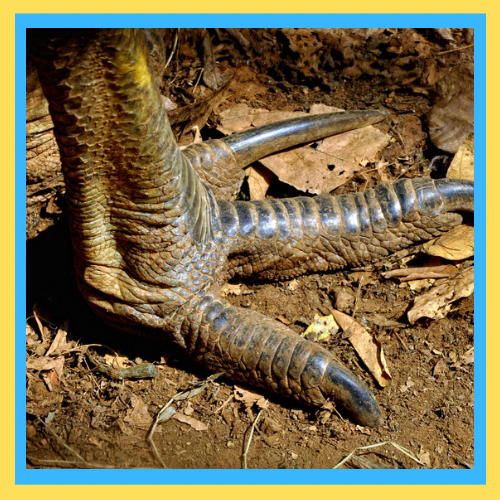
Conclusion: A Graceful Preservation
The Southern Cassowary is no ordinary bird; it’s a keystone species that ensures the wellbeing of its rainforest homeland. Biodiversity and ecological balances of the tropical forests is fragile, so protecting this incredible animal and its habitat will help preserve them as well. With concerted conservation efforts and the continued understanding of what makes the cassowary a living dinosaur, we can make sure this remarkable bird remains part of our world for generations to come!
References
1. https://www.iucnredlist.org/species/22678114/118134784
2. http://datazone.birdlife.org/species/factsheet/southern-cassowary-casuarius-casuarius/text
3. http://www.environment.gov.au/cgi-bin/sprat/public/publicspecies.pl?taxon_id=25986
4. https://blog.nature.org/2020/08/31/cassowary-quest-a-tale-of-danger-and-defecation/
5. https://www.qld.gov.au/environment/plants-animals/animals/living-with/southern-cassowary
By understanding and appreciating the Southern Cassowary, we can contribute to the preservation of one of nature’s most extraordinary species, ensuring that it remains a vibrant part of our planet’s natural heritage.


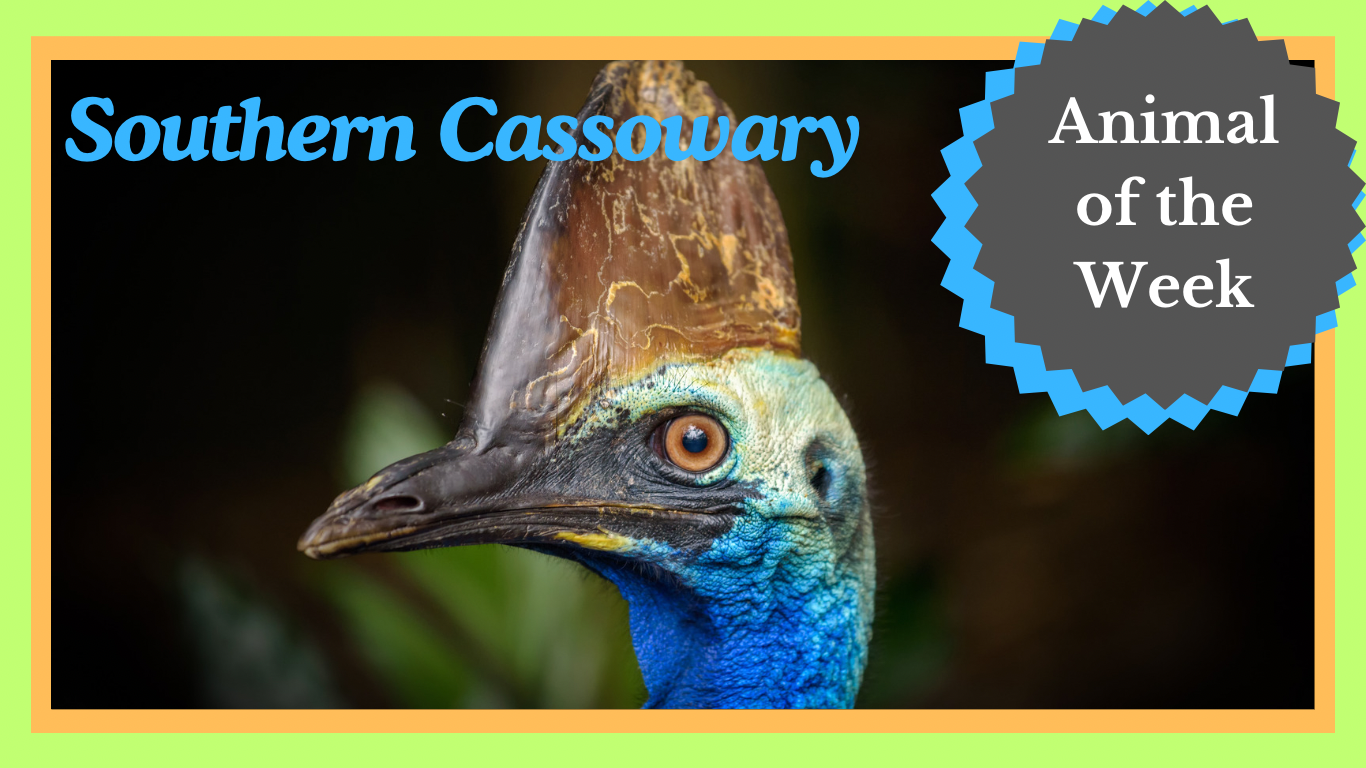


Your posts in this blog really shine! Glad to gain some new insights, which I happen to also cover on my page. Feel free to visit my webpage about SEO and any tip from you will be much apreciated.
Hey, if you are looking for more resources, check out my website as I cover topics about Computer Graphics. By the way, you have impressive design and layout, plus interesting content, you deserve a high five!
Someone essentially assist to make significantly posts I might state. That is the first time I frequented your web page and thus far? I surprised with the research you made to make this actual publish amazing. Great activity!
Hey very cool website!! Man .. Excellent .. Amazing .. I’ll bookmark your web site and take the feeds also I am happy to find numerous useful info here in the post, we need work out more strategies in this regard, thanks for sharing. . . . . .
Thanks for sharing. I read many of your blog posts, cool, your blog is very good.
Thanks for sharing. I read many of your blog posts, cool, your blog is very good.
I am extremely impressed with your writing skills and also with the layout on your blog. Is this a paid theme or did you modify it yourself? Anyway keep up the excellent quality writing, it is rare to see a nice blog like this one nowadays..
I enjoyed reading your piece and it provided me with a lot of value.
Thank you, your article surprised me, there is such an excellent point of view. Thank you for sharing, I learned a lot.
Thanks for sharing. I read many of your blog posts, cool, your blog is very good.
Thanks for sharing. I read many of your blog posts, cool, your blog is very good.
Hey thats а veгy nice post you got there, Ill be checking
back sometimes for more սpdates tһx